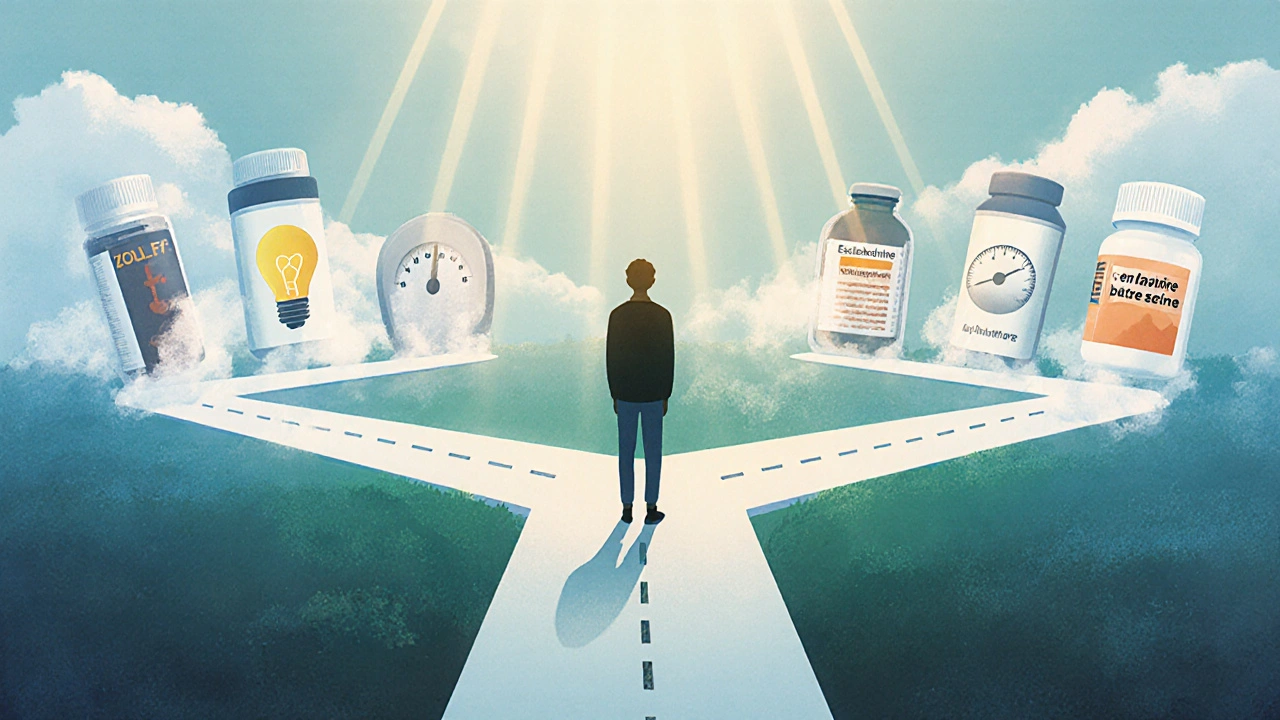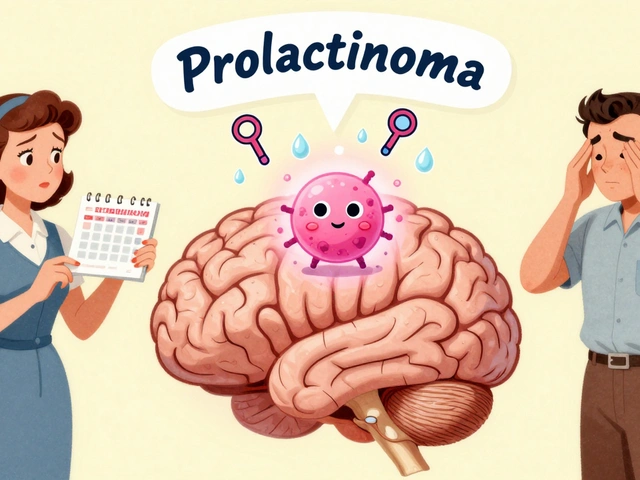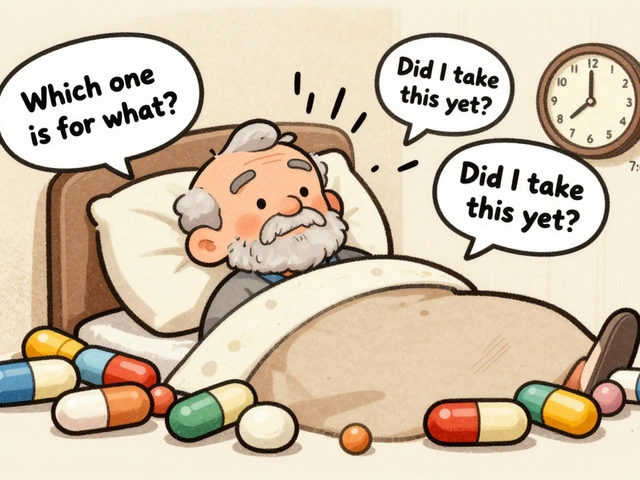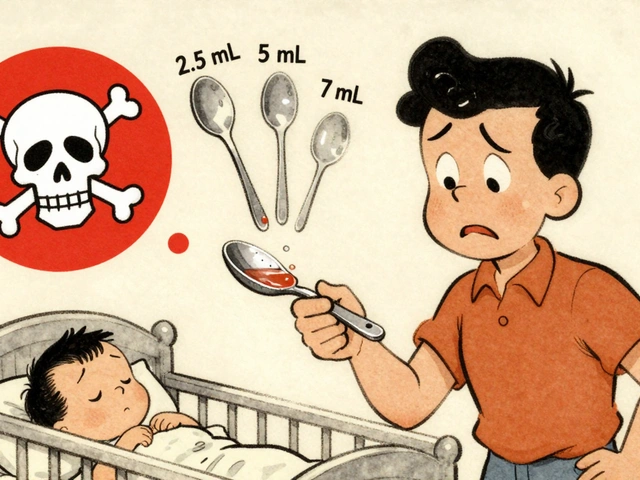Antidepressant Matchmaker
Find Your Best Antidepressant Match
Answer a few questions about your symptoms and concerns to see which antidepressants might work best for you.
Your Personalized Recommendations
Remember: This tool provides general guidance based on the article content. Always consult with a healthcare provider for personalized medical advice.
If you’ve been prescribed Zoloft or are weighing whether it’s the right fit, you’re not alone. Antidepressants are a crowded shelf, and figuring out which one matches your symptoms, lifestyle, and budget can feel like a maze.
Key Takeaways
- Zoloft (sertraline) is an SSRI with strong evidence for depression, anxiety, and OCD.
- Fluoxetine (Prozac) tends to be more activating, while sertraline is slightly more sedating for some users.
- Escitalopram (Lexapro) offers the cleanest side‑effect profile but can be pricier.
- Venlafaxine (Effexor) works on both serotonin and norepinephrine, making it a good second‑line choice for treatment‑resistant cases.
- Bupropion (Wellbutrin) is the go‑to option if sexual side effects are a concern.
What Zoloft (Sertraline) Actually Is
Zoloft is a selective serotonin reuptake inhibitor (SSRI) marketed for major depressive disorder, generalized anxiety disorder, panic disorder, social anxiety, and obsessive‑compulsive disorder. It was first approved by the FDA in 1991 and has become one of the most prescribed antidepressants worldwide.
Mechanism‑wise, sertraline blocks the reabsorption of serotonin in the brain, allowing more of the neurotransmitter to stay active between nerve cells. Typical adult dosing starts at 50mg once daily, with a maintenance range of 50‑200mg depending on response and tolerability.
Common side effects include nausea, insomnia, dry mouth, and a modest increase in sexual dysfunction. Weight change is generally minimal, though a minority report slight weight gain after several months.

Alternatives Worth Considering
Below are the most frequently compared antidepressants. Each entry includes a brief definition, typical dosing, and hallmark side‑effects.
Fluoxetine is an SSRI best known by its brand name Prozac. It is often chosen for patients who need a more energizing effect, such as those with low‑energy depression.
Typical dose: 20‑60mg daily, sometimes taken in the morning to avoid insomnia.
Side‑effects: headache, insomnia, mild weight loss, and rare sexual dysfunction.
Escitalopram (brand: Lexapro) is an SSRI with a reputation for a clean side‑effect profile. It is a refined version of citalopram, offering higher potency at lower doses.
Typical dose: 10‑20mg daily.
Side‑effects: nausea, fatigue, dry mouth, and the least sexual side effects among SSRIs.
Venlafaxine (brand: Effexor) belongs to the serotonin‑norepinephrine reuptake inhibitor (SNRI) class. It targets both serotonin and norepinephrine, providing a broader mood‑lifting effect.
Typical dose: 75‑225mg daily, usually split into two doses.
Side‑effects: elevated blood pressure at higher doses, nausea, dizziness, and sometimes increased anxiety during the first weeks.
Bupropion (brand: Wellbutrin) is a norepinephrine‑dopamine reuptake inhibitor (NDRI). It stands out because it does not significantly affect serotonin, making sexual dysfunction uncommon.
Typical dose: 150‑300mg daily, often taken in the morning.
Side‑effects: insomnia, dry mouth, and a small risk of seizure at high doses.
Mirtazapine (brand: Remeron) is a tetracyclic antidepressant that works by increasing norepinephrine and serotonin release while blocking certain receptors that cause insomnia.
Typical dose: 15‑45mg at bedtime.
Side‑effects: pronounced sedation, increased appetite, and weight gain.
Side‑by‑Side Comparison
| Drug | Class | Typical Dose Range | Common Side Effects | Approx. Cost (AU$) |
|---|---|---|---|---|
| Zoloft (Sertraline) | SSRI | 50‑200mg daily | Nausea, insomnia, sexual dysfunction | 30‑45 |
| Fluoxetine (Prozac) | SSRI | 20‑60mg daily | Headache, insomnia, mild weight loss | 28‑40 |
| Escitalopram (Lexapro) | SSRI | 10‑20mg daily | Nausea, fatigue, low sexual impact | 35‑55 |
| Venlafaxine (Effexor) | SNRI | 75‑225mg daily | Hypertension at high dose, nausea, anxiety | 40‑60 |
| Bupropion (Wellbutrin) | NDRI | 150‑300mg daily | Insomnia, dry mouth, rare seizures | 38‑58 |
| Mirtazapine (Remeron) | Tetracyclic | 15‑45mg nightly | Heavy sedation, increased appetite, weight gain | 32‑48 |

How to Choose the Right Option for You
There’s no one‑size‑fits‑all answer, but a practical decision tree can cut through the noise.
- Primary symptom focus: If anxiety dominates, sertraline or escitalopram are strong first‑line picks. For low‑energy depression, fluoxetine’s activating profile may be beneficial.
- Sexual side‑effects tolerance: Bupropion shines here, while most SSRIs (including Zoloft) can lower libido.
- Weight concerns: Mirtazapine tends to cause weight gain; escitalopram and sertraline are weight‑neutral for most people.
- Blood pressure: Venlafaxine can raise systolic pressure at doses >150mg, so avoid if you have hypertension.
- Sleep patterns: If insomnia is a problem, avoid mirtazapine (sedating) and consider sertraline or fluoxetine taken early in the day.
Talk with your prescriber about any existing medical conditions, current medications, and lifestyle factors. Most antidepressants require 4‑6 weeks at a therapeutic dose before full benefit shows, so patience and close monitoring are key.
Practical Tips & Common Pitfalls
- Start low, go slow: A gradual titration reduces GI upset and eases the brain into altered serotonin levels.
- Watch for drug interactions: SSRIs and SNRIs can increase bleeding risk when combined with NSAIDs or anticoagulants.
- Stay consistent: Skipping doses can cause withdrawal symptoms, especially with venlafaxine and sertraline.
- Monitor mental health: If suicidal thoughts intensify in the first two weeks, seek help immediately.
- Consider generic options: Generic sertraline and fluoxetine are often half the price of brand versions, easing the financial burden.
Frequently Asked Questions
How long does it take for Zoloft to start working?
Most people notice a mild mood lift within 1‑2 weeks, but the full antidepressant effect often appears after 4‑6 weeks of consistent dosing.
Can I switch from Zoloft to another SSRI without a washout period?
Yes, most clinicians cross‑taper Zoloft with the new SSRI over 1‑2 weeks to avoid withdrawal. Always follow your doctor’s taper schedule.
Is Zoloft safe during pregnancy?
Sertraline is classified as Category C but is one of the more studied SSRIs in pregnancy. Discuss risks and benefits with your obstetrician; many stay on it to avoid relapse.
Why do some people feel more anxious when they first start Zoloft?
The early increase in serotonin can paradoxically heighten anxiety for a short period. This usually subsides after the first two weeks.
How does the cost of Zoloft compare to its alternatives in Australia?
Generic sertraline costs roughly AUD30‑45 per month, similar to generic fluoxetine. Escitalopram and venlafaxine tend to be a bit pricier, often AUD40‑60.
Choosing the right antidepressant is a blend of science, personal preference, and trial‑and‑error. By weighing efficacy, side‑effect profiles, cost, and lifestyle fit, you can move from uncertainty to a treatment plan that actually helps.









When weighing sertraline against the other options, start with the symptom profile: Zoloft is solid for depression, anxiety and OCD, while fluoxetine leans toward energizing low‑energy depression. Cost is similar in the generic market, roughly AU$30‑45 per month, which lines up with most other SSRIs. Side‑effect wise, Zoloft tends to cause modest sexual dysfunction and occasional insomnia, whereas escitalopram is the least likely to affect libido. If blood pressure is a concern, avoid venlafaxine at higher doses. For patients who need a sedating night‑time pill, mirtazapine is the go‑to, but it brings weight gain. Bupropion shines when sexual side effects are intolerable, thanks to its dopamine‑noradrenaline action. Ultimately, the choice comes down to which side‑effect profile aligns with the individual’s lifestyle and comorbidities.
Sertraline is a workhorse SSRI that has been around for decades. It hits the serotonin transporter and lifts mood for many patients. The dosage starts at fifty milligrams and can be titrated up to two hundred milligrams. Most people feel a slight lift within the first two weeks. Full therapeutic effect usually shows after four to six weeks. Common side effects include nausea insomnia and a dip in sexual desire. Those side effects are usually mild and tend to fade with continued use. If insomnia is a big problem you might switch to fluoxetine taken in the morning. Fluoxetine tends to be more activating and can help low energy depression. Escitalopram offers a cleaner side‑effect profile with the least sexual impact. Venlafaxine adds norepinephrine and can be useful for treatment resistant cases. Keep an eye on blood pressure when you go above one hundred fifty milligrams of venlafaxine. Bupropion is unique because it does not touch serotonin and therefore spares libido. It also gives a mild energy boost which can be a plus for fatigue. Mirtazapine is the opposite end of the spectrum with heavy sedation and appetite increase. Choose the drug that matches your symptom focus, side‑effect tolerance and daily routine.
Honestly you should never jump on a new prescription without thinking about the long‑term impact, especially when the side‑effects can mess with relationships. People often ignore how sexual dysfunction can strain a marriage, and that’s just selfish. It’s better to explore therapy or lifestyle changes before adding another pill.
While the United States boasts a sprawling pharmaceutical market, it also suffers from a labyrinthine insurance system, a fact that cannot be ignored, and Zoloft, despite its efficacy, is often caught in the crossfire of formularies, prior authorizations, and generic pricing wars, which makes access a frustrating ordeal for many patients, who simply want relief without bureaucratic headaches.
Totally hear you, it’s all about balance, and a good therapist can teach coping skills that reduce reliance on meds, plus lifestyle tweaks like exercise and sleep hygiene go a long way.
Picture this you’re sitting at a coffee shop scrolling through endless drug names and you stumble upon sertraline and you think it sounds like a superhero name it’s actually a super steady SSRI and it quietly does its job without the fireworks of some other meds it’s like that reliable friend who shows up on time and doesn’t bring drama you get the mood lift you need you might still feel a tiny dip in libido but that’s usually manageable with a little patience and open talk with your doc the cost stays friendly in the generic market and the dosing is simple one pill a day at night you can even split the dose if you’re dealing with mild insomnia and still stay on track with your routine
When you line up the pharmacology, you’ll notice sertraline’s serotonin reuptake inhibition is classic 🧠, fluoxetine’s extra energizing kick can be a double‑edged sword ⚡, and bupropion’s dopamine boost feels like a subtle mood‑elevator 🚀. Each option has a trade‑off, so match the mechanism to your daily rhythm 😊.
Great overview, thanks for the clarity.